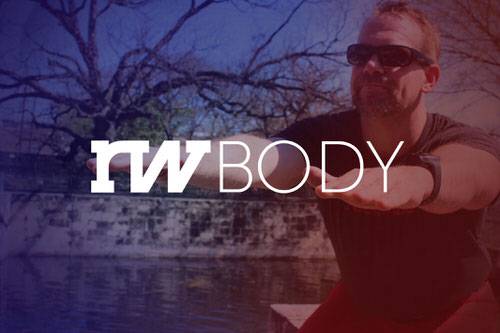
ReadWriteBody is an ongoing series where ReadWrite covers networked fitness and the quantified self.
South By Southwest Interactive is an annual tech festival known for beer, brisket, and business deals cut at bars. But the city where it’s held is also an epicenter of healthy living and innovative startups. So instead of coming back from Austin sporting some extra pounds, I strapped on some new wearables, fired up my exercise apps, and put my technology—and myself—to the test.
In the middle of a frenetic gathering of tens of thousands of tech enthusiasts, could I work out every day, eat well, and learn something new about the fast-changing world of digital fitness?
Spoiler: Yes. Here’s how I did it.
On a daily basis, I gathered statistics on sleep, calories burned, and steps from a Lifetrak Zone C410 fitness watch. I logged the food I ate and my exercise on MyFitnessPal, Pact, and GymGoal, supplementing those with a variety of specialized fitness apps like Pear Sports, FitStar, RunKeeper, Strava, and MapMyFitness. A motion-tracking app called Human told me if I managed to do at least 30, 60, or 90 minutes of movement—not a challenge when navigating the sprawl of SXSW. A habit tracker, Lift, nudged me to stick to my routines.
These apps helped me make a series of small but smart decisions, day by day, that kept me on track the whole week.
Thursday, March 6
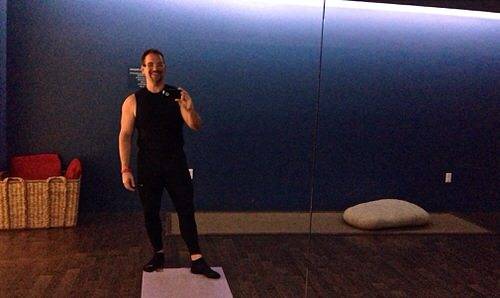
Airplane travel is brutal on the body, and my early wakeup call didn’t help. San Francisco International’s Terminal 2 has a yoga room, though, so I did a quick routine of stretches and postures to prepare for jamming myself into an economy class seat for the next six hours.
I did have one sprint through the Dallas/Fort Worth airport (during a very short layover) to break up the day.
Calories burned: 2,602
Steps walked: 12,639
Hours of sleep: 5
My friend Ellis Hamburger’s Foursquare check-in pointed us to a food truck near our hotel. I asked for my tacos minus tortillas, which kept the meal within my paleo eating regimen.
Friday, March 7
SXSW’s infamous parties don’t get rolling until the weekend, so I managed a solid eight hours of rest. ReadWrite mobile editor Dan Rowinski and I woke up early and headed to our hotel’s fitness center, where he hopped on an exercise bike and I did a workout with FitStar, my go-to travel fitness app. I announced my workout using Foursquare and Twitter, beginning a week-long campaign of fitness-shaming my fellow attendees through social media.
I had a long walk to and from a session on biohacking at a satellite location, which boosted my steps for the day. As the day wound down, I dropped in on a party sponsored by the Austin Gay and Lesbian Chamber of Commerce and burned a few hundred more calories dancing.
Calories burned: 3,363
Steps walked: 21,336
Hours of sleep: 8
And then on my way home, I stopped at a Royal Blue Grocery, a local chain whose chicken tarragon salad and roasted broccoli would keep me fed for the next few days. (While there’s tons of food at SXSW, there’s very little time, and I’d booked myself so solidly that I had to pack lunches—which helped me make healthier choices with more protein and vegetables than the typical party fare.)
Saturday, March 8
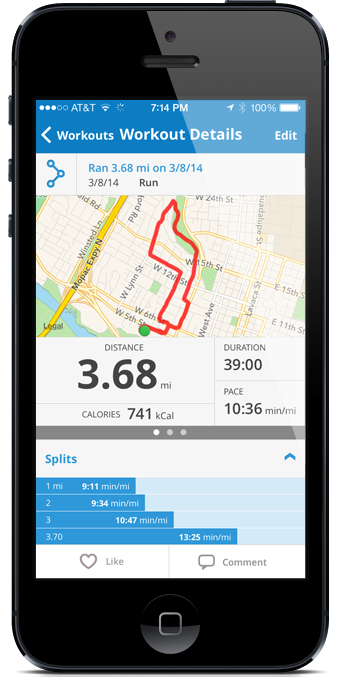
I didn’t get much sleep because I had to wake up at 6:30 a.m. to make it to the #Usemeleaveme Digital Campground, where Austin-based MapMyFitness and its new owner, Under Armour, were organizing a short run through Old West Austin.
A highlight of the run—besides the sub-10-minute-mile pace I maintained for the first three miles—was catching up with MapMyFitness cofounder Kevin Callahan, whom I’d previously only known through Google Hangouts and Twitter. We ran side by side for the second half of the course and geeked out about Bluetooth, fitness application programming interfaces, and his company’s big plans now that it has Under Armour’s resources behind it. (I’ll be writing about those in an upcoming ReadWriteBody article.)
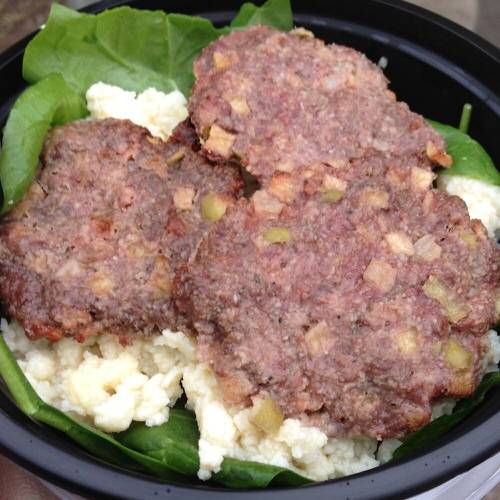
After the run, it was time for breakfast—and I had to hustle because I was teed up to do an “ask me anything” interview on Reddit, the social news site. A search on “paleo” on Foursquare turned up Snap Kitchen, a vendor of healthy prepared foods that had scrambled eggs and bison sausage ready to go. (Don’t tell the Redditors, but I did the virtual interview in my running tights and a very sweaty shirt.)
Lunch was brisket and coleslaw—the best choices I could find at Lambert’s, a barbecue joint downtown. But it was fuel for a full day of sessions and parties.
Calories burned: 3,794
Steps walked: 27,409
Hours of sleep: 4.25
A highlight of the day was Amy Cuddy’s talk on body language. Cuddy, a professor at Harvard Business School, explained how our body reacts to “power poses” by boosting our testosterone and lowering levels of cortisol, a stress hormone. Fascinatingly, the way we hunch over our glowing screens puts us in a powerless position, which increases our stress. Adopting power poses and avoiding hunching over my devices was very timely advice, because the next day was going to be a big one for me.
Sunday, March 9
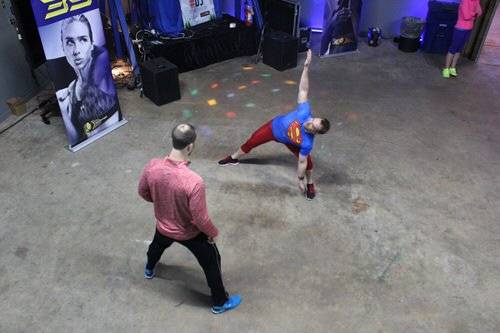
I woke with a start at 6:49 a.m., because while my phone had automatically adjusted to Daylight Saving Time, I’d forgotten to set my fitness tracker’s clock forward. I raced downstairs to meet ReadWrite writer Selena Larson, who was meeting me to take photos of her boss doing a bootcamp workout back at the Digital Campground—and maybe throw down a few sweet moves herself.
Nate Costa, a trainer who runs the Under Armour Performance Center on the company’s Baltimore campus, led the workout. Before we got started, he helped me set up my Armour39 wearable device. The Armour39 pairs a heart-rate chest strap with built-in accelerometers. As a result, it can analyze both your movement and your exertion levels, combining them into what Under Armour calls a Willpower score.

The 45-minute bootcamp was grueling. Costa ran us through high-energy variations on pushups, planks, and other bodyweight moves. I kept up with some struggles, and managed a Willpower of 4.7, burning 505 calories, according to the Armour39’s companion app on my iPhone.
Then it was back to the hotel for breakfast and one last run-through of my talk on “#siliconvalleyproblems.” Following Cuddy’s advice, I power-posed my way through the green room, and delivered a rousing jeremiad on the tangled, troubled history of tech and journalism in Silicon Valley. (We’ll have video of my talk up on ReadWrite soon.)
Calories burned: 3,063
Steps walked: 14,188
Hours of sleep: 5.5
The night’s parties—Kleiner Perkins, Topix, and Mashery—came up empty for paleo fare, so my writers and I descended on a Japanese restaurant. Sashimi to the rescue!
Monday, March 10
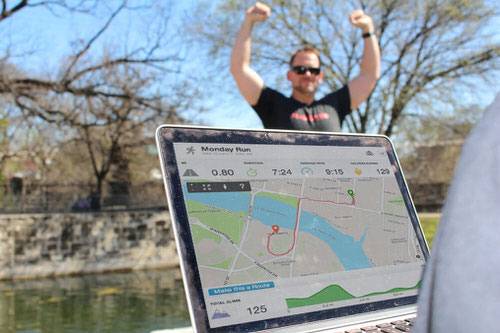
I overslept a bit, so I was short on time and light on ideas for a workout. I turned to my FitStar app to generate a routine I could do in a half-hour at the hotel fitness center.
Afterwards, I met up with Derek Flanzraich, the CEO of Greatist, a health-and-fitness site, for a morning meal. (How do you remove the refined carbohydrates from Austin’s ubiquitous breakfast tacos? Unroll them and ditch the tortillas.) I always enjoy my talks with Flanzraich, a friend whom I’ve come to think of as a personal trainer for my brain.
Clearly, I needed some more mental exercise, because I thought the panel on wearables I was going to at 11 a.m. was at the Hilton hotel. It was actually at the Hyatt—a 15-minute walk to the other side of the river. I had to somehow make in less than 10 minutes.
Calories burned: 3,200
Steps walked: 17,309
Hours of sleep: 6
I took this as a challenge: I started up my RunKeeper app and raced across the Ann Richards Bridge. I made the panel, burned 129 calories in 8 minutes, and set a personal speed record while I was at it.
Tuesday, March 11
Sleep was a constant struggle, and on the last day of the conference, I woke up late again. So it was back to the hotel fitness center, and then off to breakfast with Steven Eidelman, the cofounder of Whistle, the maker of a fitness tracker I use on my dog, Ramona the Love Terrier. (The meal for me: a crêpe with scrambled eggs minus the crêpe.)
We talked about Whistle’s push into retail distribution with PetSmart, a big move for the small startup—and how addicted I’ve become to Eidelman’s app to watch Ramona’s activities throughout the day, even when I’m thousands of miles away. (One day I panicked and called home when I saw zero activity for Ramona. It turned out my husband forgot to put her Whistle on that day.)
I like walking meetings at the office. At SXSW, it can be the only way to catch some of the busy personalities who swoop through Austin, like Yahoo’s chief marketing officer, Kathy Savitt. Our three-block walk-and-talk added a few steps to my day.

That afternoon, I met up with Tony Lee, community manager for Atlas Wearables, a company developing a three-dimensional fitness tracker. You wear the device on your wrist, and it uses accelerometers to determine precisely which exercise you’re performing, and analyzes your form to tell you if you’re doing the movement correctly.

I tried on a design prototype and a working test version of the device, which it plans to release in December. While it didn’t work perfectly, as you’d expect from an unreleased prototype, I could see from a companion app Lee ran on his MacBook that the device was picking up unique patterns for the squats, pushups, and side planks I was doing.
Calories burned: 2,350
Steps walked: 10,777
Hours of sleep: 5
At launch, Lee said, Atlas hopes to have 50 to 100 exercises mapped out, and detect not just the number of reps and sets you do, but how much weight you’re lifting. It was a thought-provoking finish to my fitness-driven stay in Austin.
What I Took Away From My Time In Austin
There’s been buzz about wearables for years at big events like SXSW, Mobile World Congress, and the Consumer Electronics Show. But what I saw here was how they’re becoming both real and really useful. Armour39, for example, aims to distill your workout into an easily tracked number, while Atlas hopes to watch your form like a personal trainer on your wrist. If they deliver on those promises, I can see them becoming a real help to my workout routine.
Eventually, these devices will get better and better at tracking and analyzing my fitness activities. They may get to the point where I don’t have to launch, say, RunKeeper to track an impromptu sprint across town. Instead, my apps will just know that I’m moving and wake up the appropriate sensors to record the relevant details.
Right here and now, though, I get a lot of benefit by deliberately using the apps in my phone’s overstuffed Exercise With It folder. The mere act of logging what I eat and how I work out makes me think about it, and that constant reminder, in turn, prompts me to include my health in the packed calendar I set for an event like SXSW.
I don’t think my style of SXSW will work for everyone. Some people like to treat the event as spring break for geeks. That’s not for me. I’d rather take in new ideas, meet interesting people, and catch up with old friends. To do all that, I like to feel like I’m on top of my game—and sticking to my workout and nutrition plans helps me get there.










